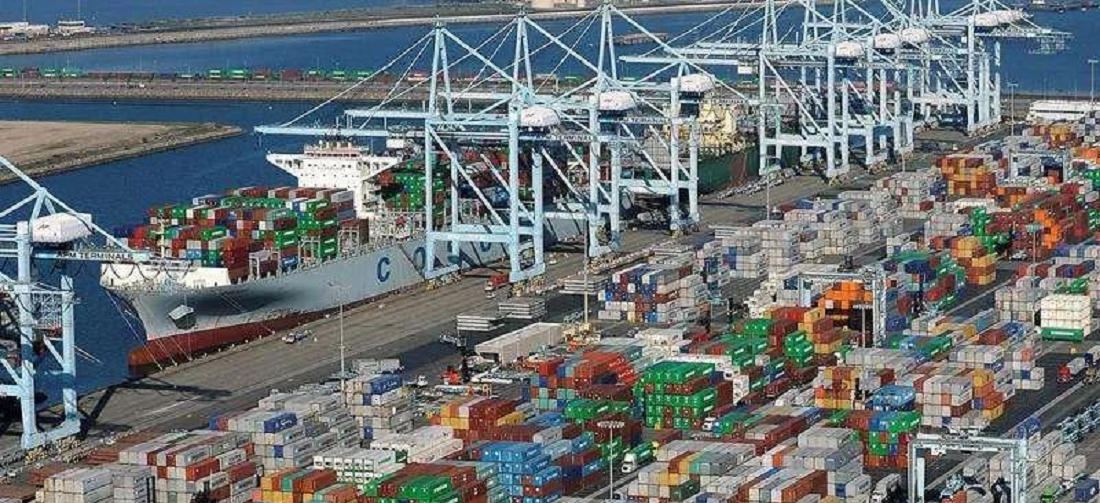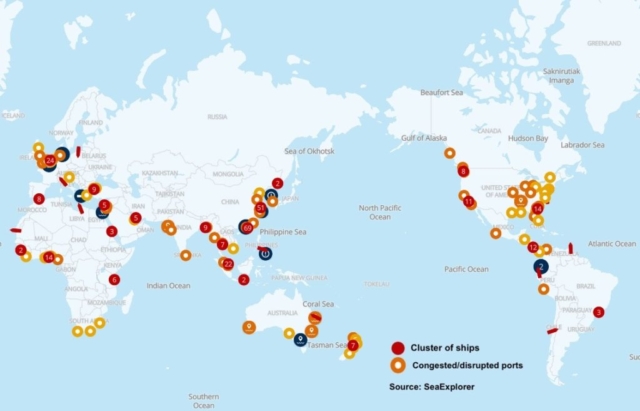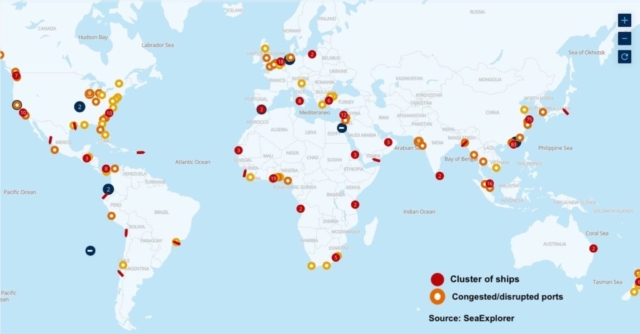
Liner congestion spreads across the planet, 304 ships queuing for berth space
Jun, 18, 2021 Posted by Sylvia SchandertWeek 202125
The ebb and flow of record global liner congestion is neatly encapsulated in two maps provided below from Seaexplorer, a container shipping platform created by logistics giant Kuehne+Nagel.
As of 3.30 pm Singapore time on June 18, (see top map) there were 304 ships idle in front of ports around the world waiting for berth space to open up. Seaexplorer data shows there are 101 ports reporting disruption such as congestion. Officials at the Kuehne+Nagel digital offshoot report the number of ships forming queues hit 350 in the middle of this week before falling back to 304, the same level as this time last week (see lower map). Red dots in the enlargeable maps represent clusters of ships while orange ones mark out ports that are congested or suffering from disrupted operations.
The clear change over the past week is how the congestion, so visible in recent weeks in south China, a key export area hit by a Covid-19 outbreak, is now spreading to other important hubs. Singapore, for instance, has seen the number of boxships waiting for berth space increase by 37.5% over the past week, while intra-Asia hubs such as Laem Chabang are now reporting tailbacks and in the US, east coast ports are suffering all manner of disruptions.
While last week, boxships queueing in Chinese waters made up more than 50% of the global total, this has dropped today to less than 40% indicating the growing global congestion contagion.
Source: Splash 247
To read the full original article, access the link below:
https://splash247.com/liner-congestion-spreads-across-the-planet-304-ships-queuing-for-berth-space/
-
Ports and Terminals
Apr, 11, 2023
0
Paraná-based ports see 17.2% cargo throughput increase in March
-
Ports and Terminals
Oct, 16, 2020
0
Governor of Paraguay authorizes licensing and regulating of private ports
-
Other Logistics
Feb, 19, 2019
0
Chinese companies to compete for Salvador bridge project
-
Ports and Terminals
Oct, 02, 2024
0
Public Prosecutor’s Office investigates excessive delays at Port of Manaus





